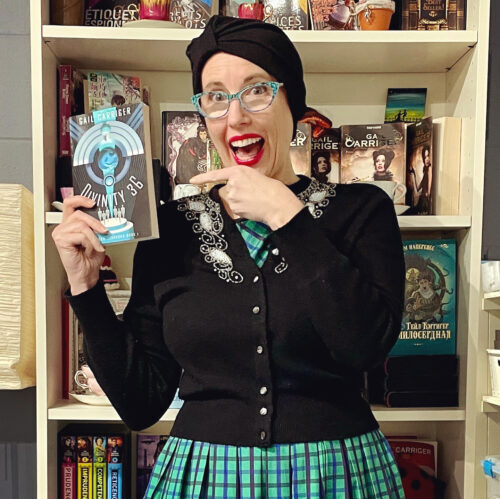What is an author style guide? How about a style sheet?
In putting together a pronunciation guide post and video for my science fiction series (aliens make everything complicated, including language) I realized I’ve never talked about what a style guide actually is (for us fiction writers, I mean). I started to amend that post with an end note on this subject, and then realized I was writing a whole new post. Because most of the stuff out there is about style guides for academic/non-fic authors and this… isn’t.
So here, Gentle Reader, is a guide to style guides for fiction authors!
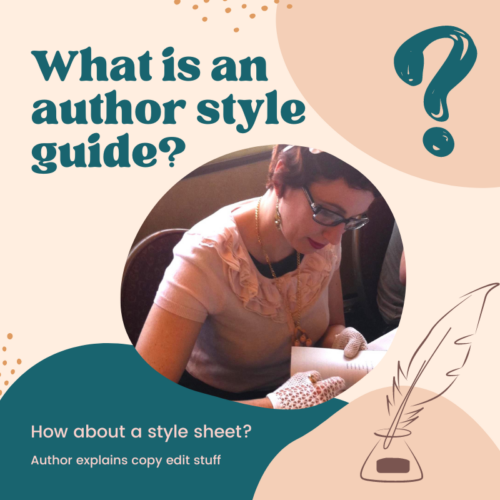
Style guides/sheets are something copy editors give to authors, and/or authors give to editors (and their publishing houses) indicating preferential sentence structure, made up words, names, and unique language.
Why do we do this?
So that the copy editor (CE) knows what words NOT to correct or change (what to ignore) but also how those non-standard words are meant to be spelled – since authors can (and often do) misspell their own words. Also so the CE will not attempt to change those intentional choices an author makes around grammar that is part of the author/narrator voice.
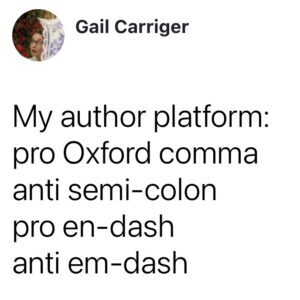
This is usually a universal guide to how the author uses language (unless the author changes their voice substantially between books – see Tanya Huff). It has to do with how an author writes and how they like to structure their sentences and grammar.
It will be included in the style sheet for each individual book/series, but is pretty much linked to an author’s specific voice (narrative style), so carries throughout their work (although it can and does change and evolve over time).
Author style guide example (Gail Carriger)My own personal style guide is something you may or may not have noticed as you read my books, it includes things like:
Punctuation Generaluse serial comma (aka Oxford comma)italics or roman according to main surrounding textpossessives of s-terminal names unless already plural/plural-appearing: James’sellipses: unspaced, three, space after if terminal replaces terminal punctuationparenthetical use permitted (for interjection of narrator voice)conversational language & grammar permitted in dialoguePunctuation Author Preferencesno semicolons if possible in general (space en dash space instead in narration, comma splices standard in dialogue) NEVER use ; in dialoguespace en dash space in place of just em dash, save for cut-off speech AKA opt for the en dash (–) with two spaces either side when using for grammar purposes (so in place of the : or the ;)*em dash** only for interrupted dialogue with spaces only on outside AKA use un-spaced em dashes (—) only for interrupted speech like th—cutoff speech indicated by em dash is not followed by sentence-terminal punctuationcomma use (or lack thereof) driven primarily by comprehensibility, so rules may be bent or ignored entirely if necessaryrestrict colon use, opt for the en dash if possible do NOT correct to cliche (e.g. it is meant to read “all pompadour and no circumstance”)fragment sentences permitted at all timeschoice to use contraction is intentional, especially in dialogue, and used to indicate speech pattern, class, linguistic register, or narrator voice – please do not standardize contraction useleapt instead of leapedMr Mrs Miss without “.” ***leave space before paragraph returnTypefaces & Capitalizationitalics for: emphasis, words as words, words as sounds, implied/recalled dialogue, direct thoughts, long displayed/written textRoman for emphasis within italicized passagesSmall caps for signs, and displayed/written text messagesTitles like Lord and Priest, familial titles like Mother, and noble addresses like Your Majesty and His Majesty capped when used in place of name (direct address)Otherago/before, that/which distinctions maintained where feasiblelike is acceptable substitute for as ifcomposed words that begin with mid or half are hyphenated if not specified in Webster’s (e.g., mid-roll)comma before terminal either/neither/too if it refers to proximate item (e.g., “I don’t like this, and I don’t like that, either” vs. “I don’t like this, and she doesn’t like it either”)times are to be written in American format (e.g., 12:40, not 12.40); AM/PM uppercased with no periods-ward, not –wards (except in dialogue and first-person narration when consistent with prior usage)* En & em dash issues: I have a complex reason for this that mostly has to do with being a digital reader, you can ask me about it sometime if you are really interested.
** The em dash is the REALLY long one.
*** Mr (with no .) This is something my American publisher (Orbit) did from the start with Soulless, it’s part of their style guide, so I adopted it for constancy throughout all my books
3 Other Style Guides1. Publishing houses also have style guides.Publishing houses have their own style guides that their editors operate under. This will include things like whether or not to use the oxford comma, how dialogue is type set, whether the spelling is British or American, which dictionary (Webster, Oxford, etc…) and which style guide (usually Chicago), and so forth. Sometimes this conflicts with the author’s preferences. This can result in… negotiation.
In my experience the author wins about 50% of the time.
I should note that things like whether a book is anglicized (USA or UK English spelling, but also use of words like forwards versus forward) is not always up to the author. I talk about this in this blog post: The Ladybird Problem
2. Copy editors have preferencesAlso copy editors can have their own tics. Things they really don’t like and always want to change. (Ask me about “that banning” sometime over drinks.) Sometimes us authors have to adjust our style sheets to compensate.
Technically, however, a copy editor should adjust themselves to the author’s voice and never try to correct for aspects that are intrinsic to their writer DNA. But if that writer quirk is technically an error in the English language a copy editor will likely have a very difficult time of it. (Like an intentional miss-use or misspelling of a specific word.)
To be fair, so might the readers.
3. Book or Series Specific Style SheetsThe specific style sheet as handed off to a copy editor (or the reverse depending on your relationship with that editor) will include your style guide (if you have not worked with that editor before) and then a style sheet for this exact book in play.
Because this is language (and to make matters confusing) the terms style guide and style sheet are conflated constantly, don’t worry about it.
Anyway, in addition to all of the above elements a style sheet will include all the made up words, names, and concepts related to that specific book/series. Also all iterations of those names (like both Dyesi and Dyesid Prime).
These are the things readers will notice and ask you about. Mostly “how do you pronounce x?”
I have a blog post about names and pronunciation here. But when I dove entirely into sci-fi for the Tinkered Starsong series I realized I need to do a whole video on how to pronounce all my made up stuff.
Not just for you, but also for my poor audiobook narrator!
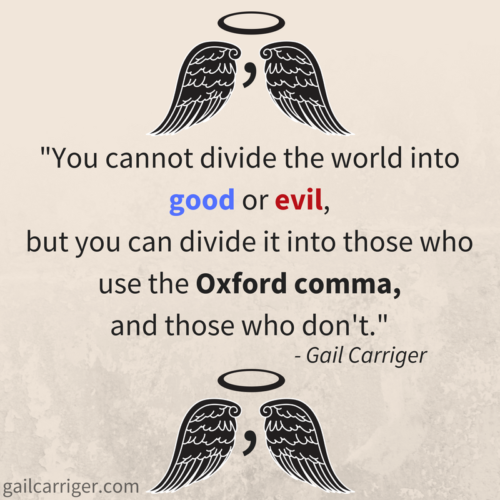
Yours (destined to be killed arguing over semi-colons),
Miss Gail
Find my books
Direct | Amazon | Kobo | Bookshop.org | B&N | Apple | Foyles | Mcnally Robinson | Angus Robertson
Here’s a printable Downloadable Checklist of ALL my books!
Did you miss my latest release? Want more sneak peeks, free goodies, gossip, behind the scenes info? This goes to my Chirrup members, because I love them bestest. Sign up here.BOOK DE JOUR!Divinity 36: Tinkered Starsong Book 1
PICK YOUR VENDOR!Direct from GailThe aliens are coming for us and they want our voices.
New York Times bestselling author Gail Carriger brings you a gloriously warm and unique scifi about the power of art, celebrity, and found family.
Gail’s Daily Tea PartyTisane of Nifty
Writerly Tincture

Book Nibble

All Gail Carriger Sci-Fi books (as of June 2023)
Quote to Sip
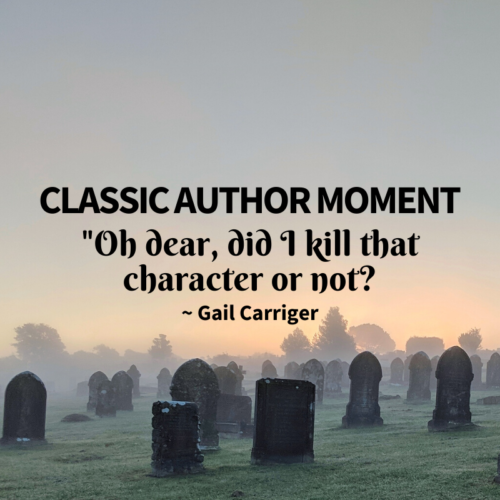
Hail the Victorious Parasol
- Gail Carriger's profile
- 15353 followers




